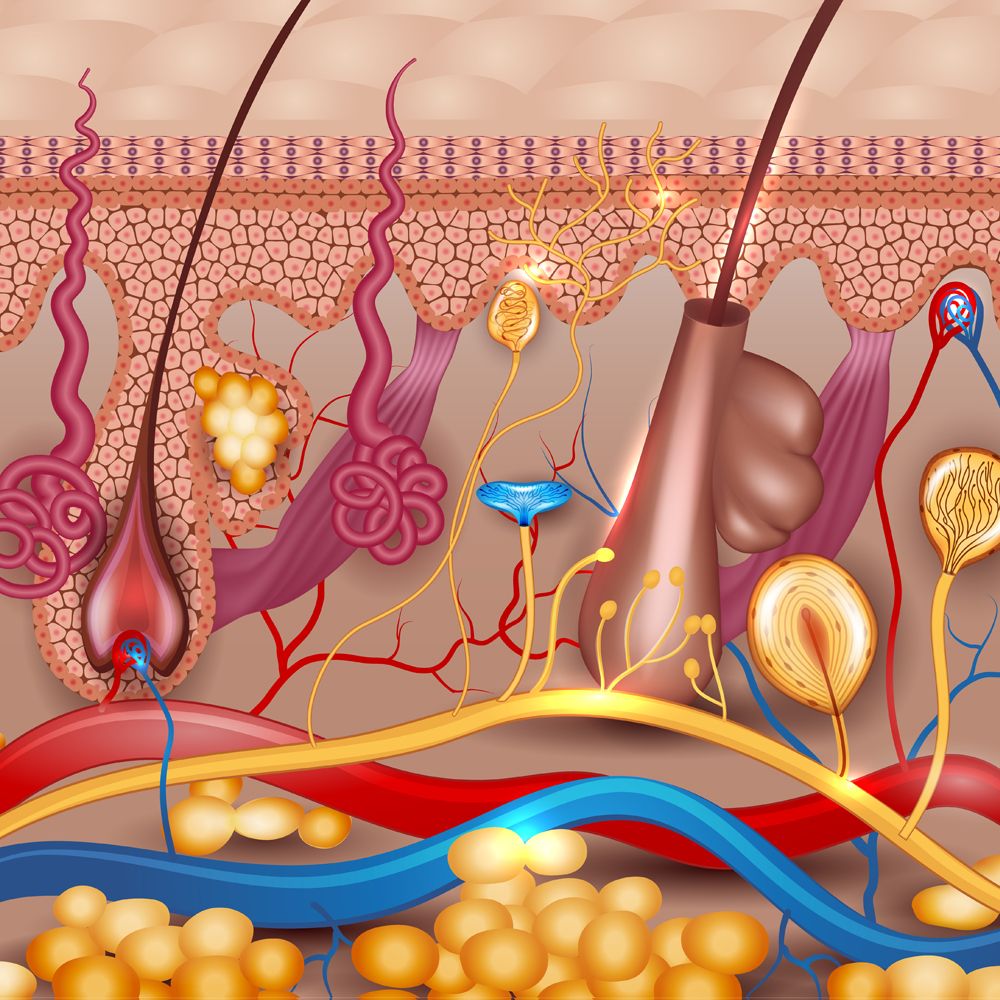The integumentary system is made up of the skin, hair, and nails. Its main functions are protection, regulation, and sensation. The skin is the largest organ in the human body, and it contains a variety of receptors that sense touch, temperature, pressure, and pain. The Integumentary System infographic provides a colorful representation of the system that’s easy for students to read and understand.
Sensory receptors in the skin are important for perceiving the external environment. The density of these receptors depends heavily on the location on the body. Use Carolina® 2-Point Discriminators to help students explore varying pressure receptor densities at different points. The activity “Cutaneous 2-Point Discrimination” provides a quick, easy procedure to help students learn about some of the functions of their own integumentary systems.
Skin models provide greatly enlarged cross sections that make it easy to visualize the layers of the skin as well as the placement of sebaceous glands and sensory receptors. Prepared microscope slides of skin cross sections are also valuable in the lab. You can similarly use our Integumentary System Slide Set. Pressure receptors aren’t the only kind of sensory receptor you can examine. The Carolina® Cutaneous Sensations Kit allows students to test for touch and temperature receptor density. As you wrap up your integumentary system unit, use this review as a study guide.
You have probably noticed that cutaneous receptors are not equally distributed throughout the skin. Some places on your body are more sensitive than others. This activity explores the density of mechanoreceptors in the skin on the hand

Powered By EmbedPress
Essential question: What is the structure and function of the integumentary system?
Carolina is teamed with teachers and continually provides valuable resources–articles, activities, and how-to videos–to help teachers in their classroom.
Get the latest news, free activities, teacher tips, product info, and more delivered to your inbox.